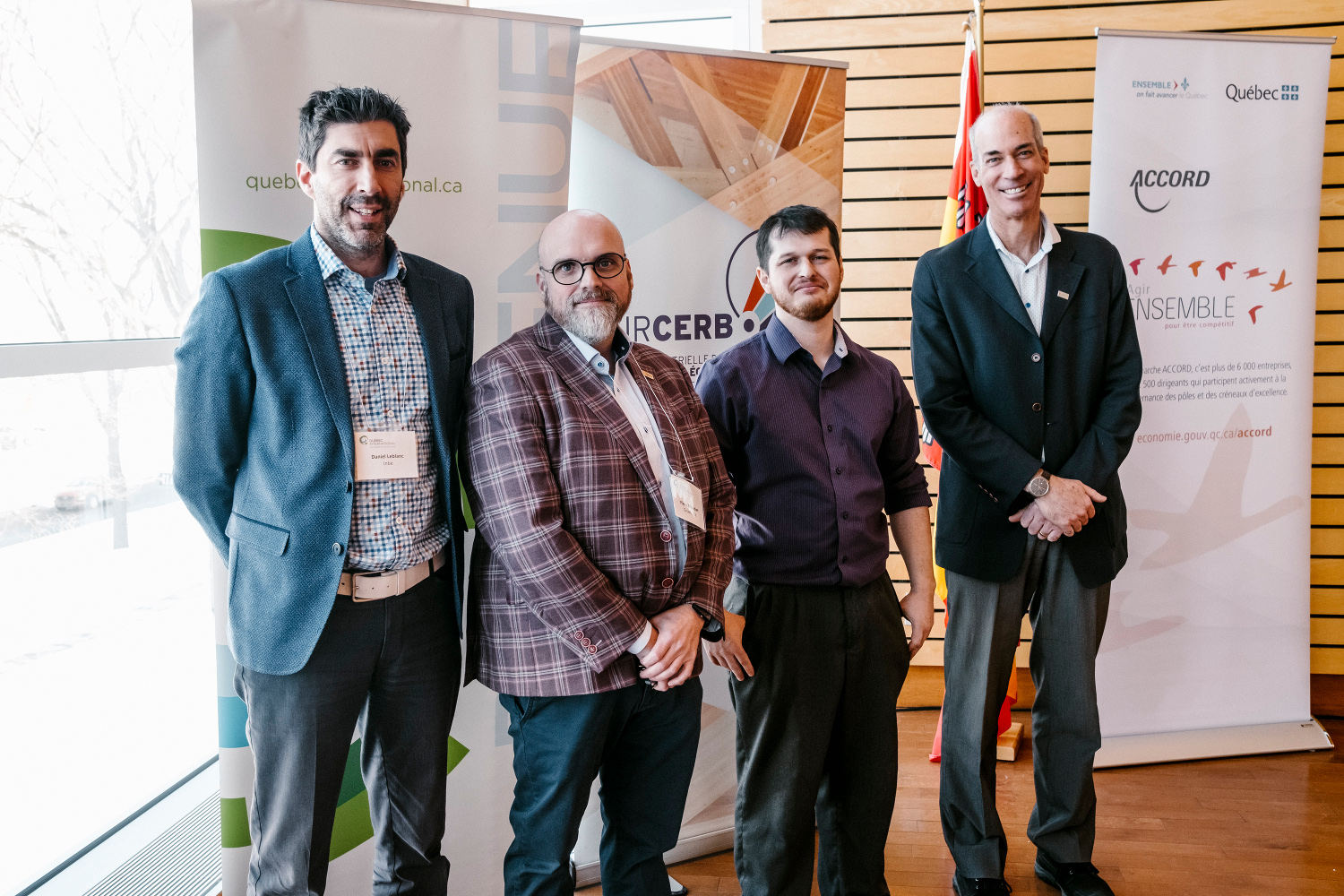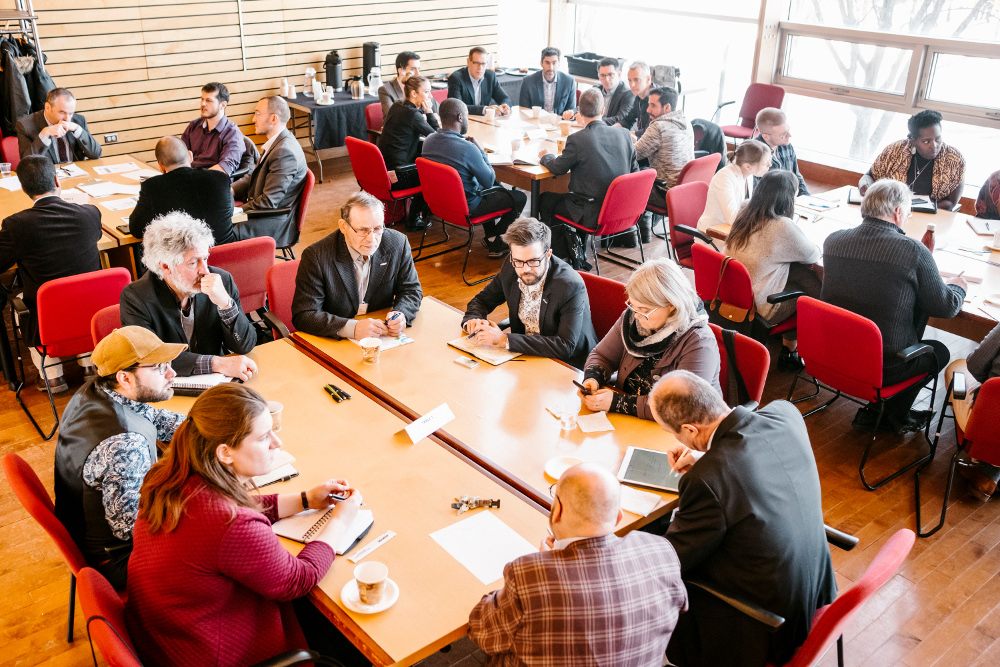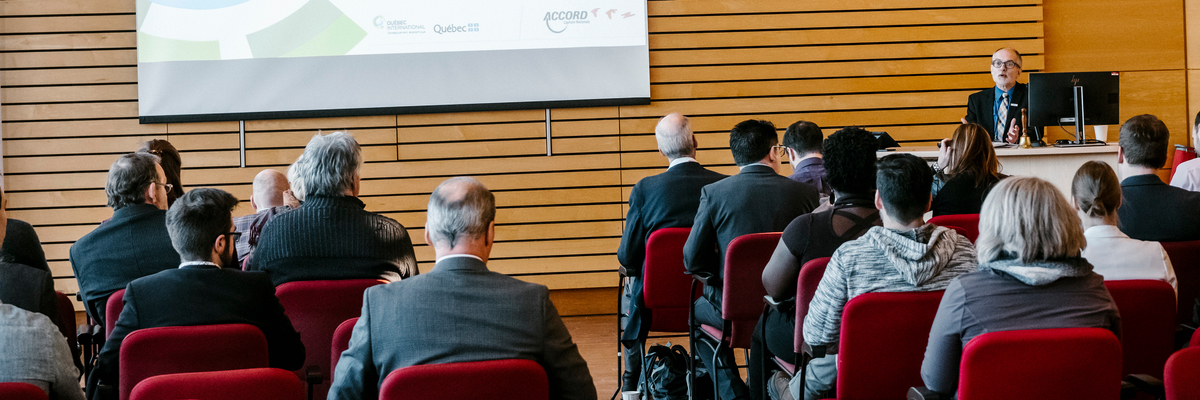The Green and Smart Building cluster had a clear direction for 2019: building the future through collaboration, innovation and knowledge. This event was a great example of this vision.
 With a focus on collaborative projects, the aim of the event was to put words into action by bringing together cluster member expertise, generating innovative ideas and ensuring relevant support for the creation of successful partnerships in the form of collaborative projects that would benefit the industry in general.
With a focus on collaborative projects, the aim of the event was to put words into action by bringing together cluster member expertise, generating innovative ideas and ensuring relevant support for the creation of successful partnerships in the form of collaborative projects that would benefit the industry in general.
The development of such projects was core to the event. Ysabelle Poulin, cluster development advisor for the Direction au soutien à l’entrepreneuriat et aux créneaux d’excellence at the Ministère de l’Économie et de l’Innovation (MEI), started by explaining the concept and benefits of collaborative projects. These should include the direct participation of at least three companies, or two companies and a research organization, as well as members of the cluster. Collaborative projects should also have a mobilizing effect on stakeholders other than the promoter, generate significant qualitative improvement for the cluster and the companies, and enhance the cluster’s provincial and international visibility.
 In other words, a collaborative project should prompt industry-related stakeholders to use their complementary skills as a driver of innovation. Thanks to the Green and Smart Building cluster and the MEI, these collaborative projects may be eligible for financial support, under certain conditions.
In other words, a collaborative project should prompt industry-related stakeholders to use their complementary skills as a driver of innovation. Thanks to the Green and Smart Building cluster and the MEI, these collaborative projects may be eligible for financial support, under certain conditions.
The enthusiasm was already evident during the four project presentations that followed, as each had the potential to become a major collaborative project. The Université Laval Industrial Research Chair on Ecoresponsible Wood Construction (CIRCERB) opened with a detailed presentation advising numerous possible collaboration opportunities with its researchers and other partners.
Then came the time for the green and smart building cluster to introduce the ecodistrict project, which will involve the construction of three mixed-use buildings. These must integrate three different frame types (wood, steel, concrete) as well as the latest technologies in smart houses (home automation, AI) and green construction (high-performance shells and windows, renewable energy).
Inbe presented a consumer-endorsement project. Partner engagement will take the form of co-creation, validation and product-testing workshops with online community management. They wish to create a bridge allowing architects and designers to create products and services in collaboration with innovative manufacturing companies.
Finally, S3nergy presented its REGENWATER project, focused on accelerating collective energy transition through initiatives like including a domestic wastewater heat recovery system to a public housing building managed by the Office municipal d’habitation de Québec (OMHQ). In the long run, this project would reduce the operating costs by reusing this wasted energy.
 After the presentations, attendees had the opportunity to explore these projects during three roundtable discussions and signal their interest. Competitors became collaborators in these discussions and each stakeholder had something to contribute. Initial meetings were planned between the new partners, promising great developments to come.
After the presentations, attendees had the opportunity to explore these projects during three roundtable discussions and signal their interest. Competitors became collaborators in these discussions and each stakeholder had something to contribute. Initial meetings were planned between the new partners, promising great developments to come.
Of course, this event is only the beginning! The success of this edition will most likely lead to other similar meetings in the near future. In the meantime, if you would like to submit a collaborative project for a future edition of these events, please contact Martin Gougeon, director of the Green and Smart Building cluster.




